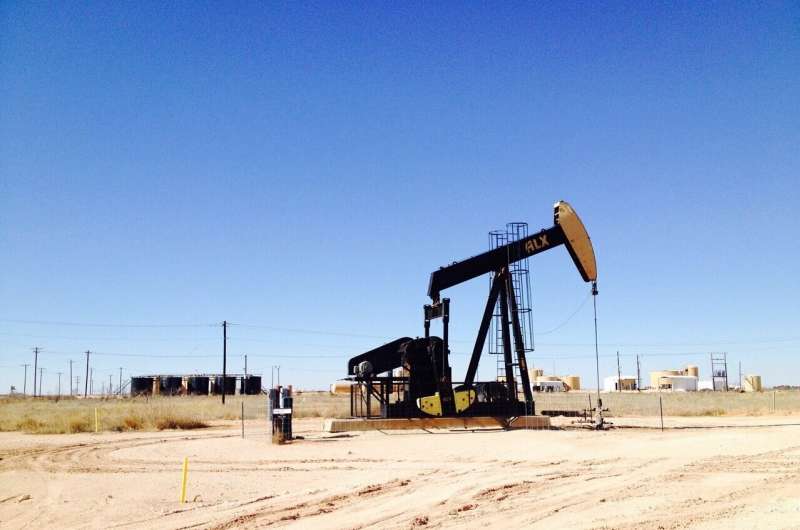April 12, 2022 report
Arguing for the inclusion of radiolysis of organic matter in shales when monitoring emissions at fracking sites

A team of researchers from Bureau de Recherches Géologiques et Minières, in France, the University of Bern and the University of Calgary, has found that shale gas produced by radioactive decomposition represents more of a greenhouse gas emissions threat than has been previously thought. In their paper published in Proceedings of the National Academy of Sciences, the group describes how they demonstrated that the overlooked source of natural gas should be considered when monitoring emissions at fracking sites.
As the researchers note, natural gas (mixtures of methane, butane, propane and ethane) has traditionally been classified into three main types based on its means of creation: thermal, microbial and inorganic reactions. All three types are involved in fracking, where holes are drilled horizontally into shale deposits and pressurized water is injected to release the gases held in them. As fracking has become a more common source of natural gas production, environmentalists have become concerned that byproducts are being released into the atmosphere, many of which are greenhouse gases that contribute to global warming.
Because of that, officials have put rules in place that force energy companies to monitor and prevent such gases from being released during fracking activities. But, as the researchers with this new effort note, such rules do not include sites where natural gases were produced by another means—radiolysis of organic matter. Until now, it has been assumed that natural gas creation due to radioactive decomposition made up such a small amount of the gas that was being produced during fracking that it did not warrant monitoring. That may change as the researchers found that such gases may make up 25% of natural gas produced by fracking operations in many regions.
The work by the team involved studying the data from prior research efforts involved in analyzing the means by which gas is produced in shale by radioactive decomposition. They then used what they learned to calculate the types of hydrocarbons produced in such a manner and found that they would be typically isotopically light, meaning they would be associated with high amounts of propane, ethane and other heavy gases that could be emitted into the atmosphere. The researchers suggest this indicates that it is crucial that fracking sites involved in extracting natural gas made through radiolysis of organic matter be monitored to ensure that they are not emitting greenhouse gases.
More information: Maria Naumenko-Dèzes et al, Natural gas of radiolytic origin: An overlooked component of shale gas, Proceedings of the National Academy of Sciences (2022). DOI: 10.1073/pnas.2114720119
Journal information: Proceedings of the National Academy of Sciences
© 2022 Science X Network




















